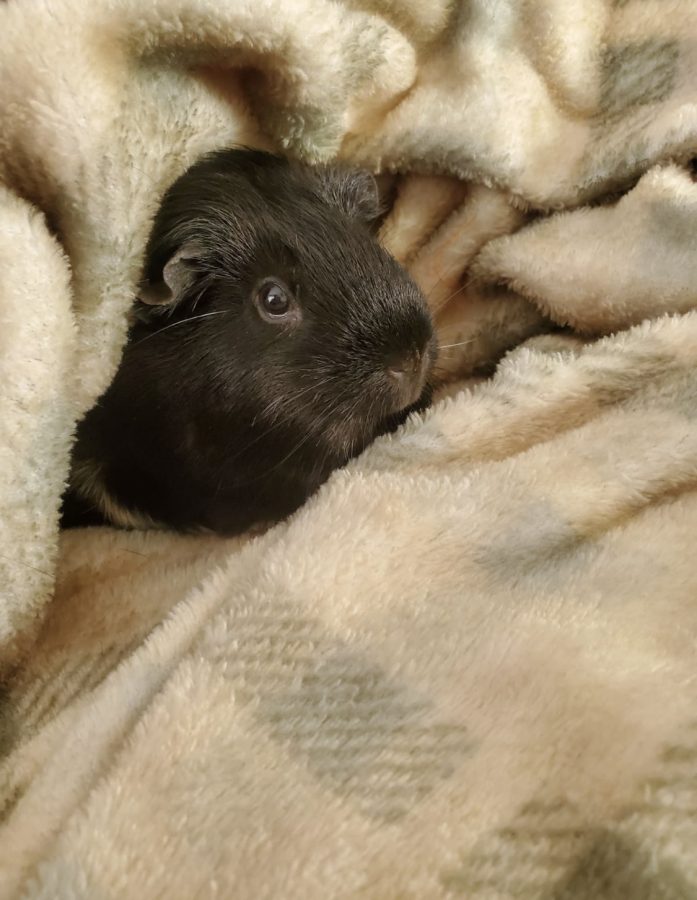Owning a guinea pig
When deciding to adopt a new pet that is smaller, many stand out because of their behavior, looks (fluffy animals are a huge thing I love) and even their social standing. So what about guinea pigs?
Guinea pigs (often called domestic cavy or cavy for short) are small rodents that can live up to 8 years. Many are quite personable and have unique personalities. I have two, both females, who are quite young: Honey (black coloring), who is just over a year old, and Spetzel, (white and gray coloring) who is just a few months younger.
Before I had my piggies, I did some research on what was needed to care for them, and I must say that I learned more from experience instead of research when it came to most things. If you choose that having guinea pigs is a good idea for you, you should know that they are prey animals and need to be in groups to be most comfortable, so having 2 or more together is best for them. You also have to be a very vigilant owner because their health deteriorates extremely quickly. I’ve lost a pig who had been showing signs of deteriorating health for just a 48 hour period before she passed.
Their diet consists of many vegetables, some fruits, hay, and perhaps a few supplements to help their health. Guinea pigs cannot have iceberg lettuce because it is primarily water and has no nutrient value, yet romaine lettuce is great for them. When it comes to fruit, it should be given sparingly or as a treat. Too much sugar in their diet can be quite harmful to their overall health. Hay, specifically Timothy hay, should be the main staple of their diet. When it comes to supplements, they need quite a bit of vitamin C to maintain good health, so giving them a tablet would be great to make sure they are healthy.
Each cavy has its own personality. It is quite prominent to see when you have a group of them and can notice who is most social, fearful and playful. My guinea pig, Spetzel, is the younger of the two and is quite shy when someone is approaching their home. If I walked up slowly and opened the door, she would still run away (unless I brought food because what pet does not love food?). Honey, on the other hand, is what I like to call the pack leader. I often see her “bossing around” Spetzel and showing her that she is the one in charge. Honey likes to see what is going around in the room they are in, so she likes to sit on top of the hidey they have and just watch what’s going on. I have also experienced her watching the TV when I decide to play video games and she reacts when the screens change.
Vocalization is vital to knowing what your guinea pig is feeling. “Wheeking,” or a high pitched squeal, can mean multiple things, like they are hungry or they are interested in what is going on. Purring, I find this quite odd, is a sign of disliking or anger. The sound you will hear the most is wheeking; I hear it on a daily basis because they think I’m feeding them whenever a bag is opened. They also have a tendency to do what I call “happy hops,” or what is better known as popcorning, which is when they run around and hop.
Deciding a home for your new pigs can be hard because they are quite active from what I have experienced. There should be enough room for them to have at least one hidey, or more depending on how many pigs you have, and still quite a bit more so they have room to move around. While they make great pets, they are a big commitment, so it’s important to be informed before jumping right in to guinea pig ownership.




